evening, 22nd November, (along with fellow writers Anna Westbrook, Alexandra Joel and Sulari Gentill) at the incredibly atmospheric Stoneleigh 50 (Chippendale, near Central Station, Sydney).

The Pinot Noir Study Room at Stoneleigh 50
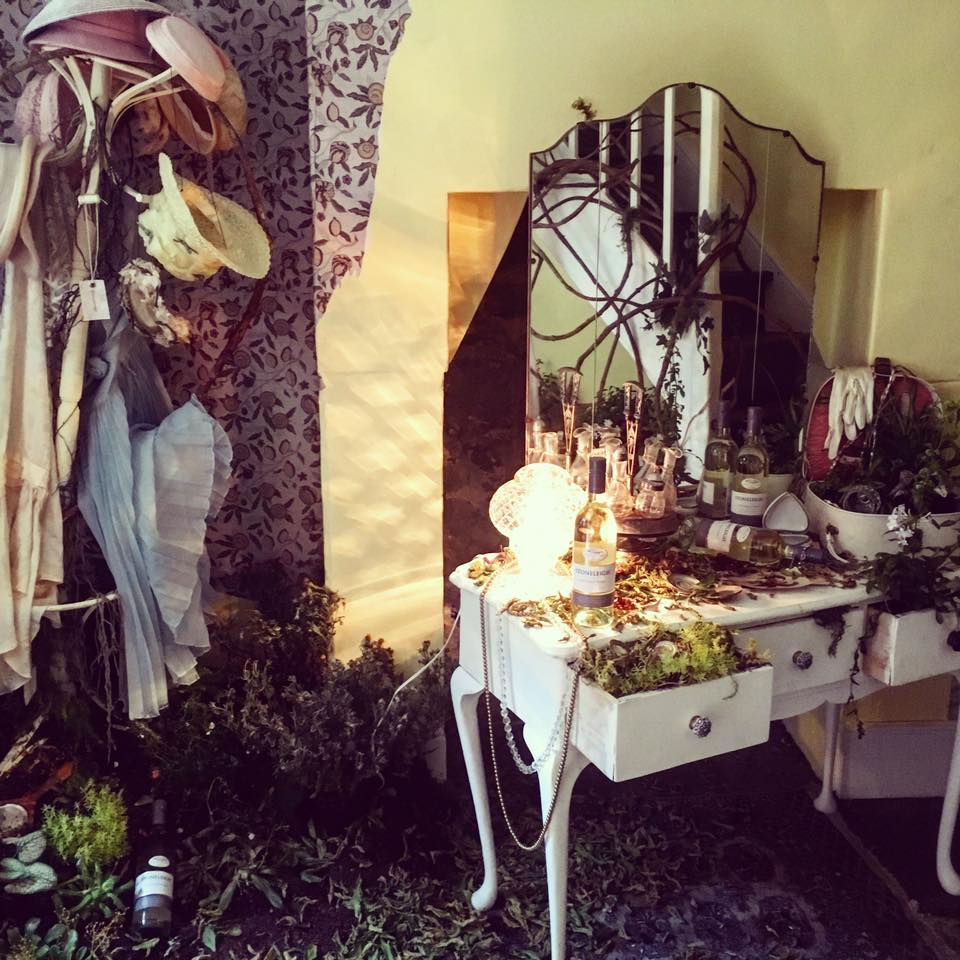
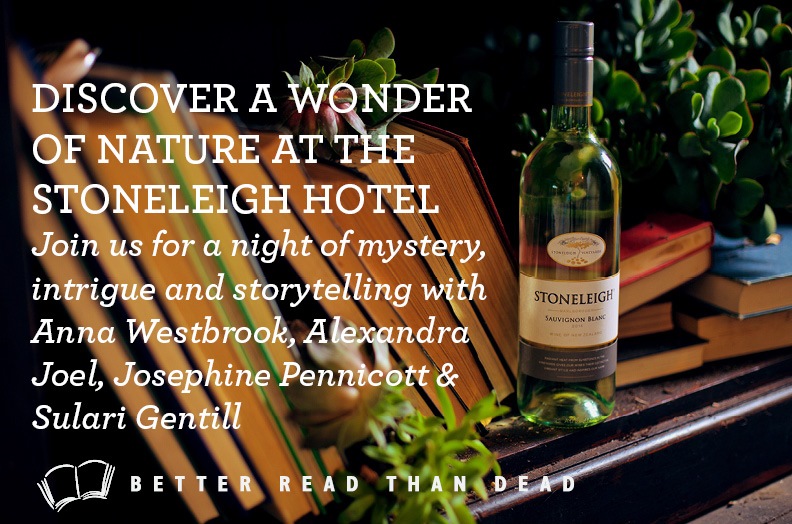

The Pinot Noir Study Room at Stoneleigh 50


It is the school holidays. I’m the first awake as my family were all up late last night. My eleven-year-old girl read The Cursed Child in bed with a torch till past midnight. She has re-read this book over ten times since we bought it for her. J.K Rowling’s world has meant to much to her over the years, just as Enid Blyton formed my childhood joy and provided solace in tough times.
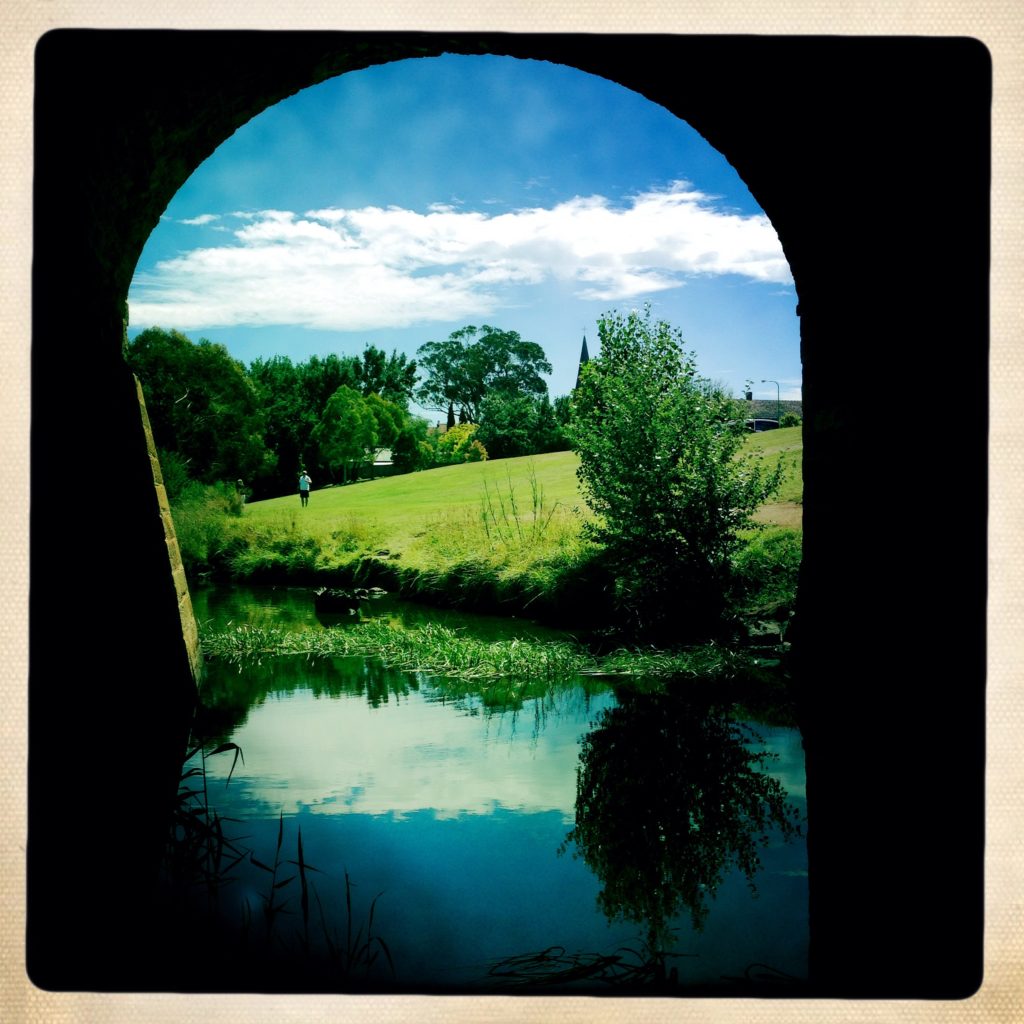
Outside, the weather is bleak and a wind blows hard, making the trees shake around the house. We are hoping for snow to fall in the Blue Mountains, despite the fact we are now in October. Snowfalls are still possible in early Spring when you live above the clouds.
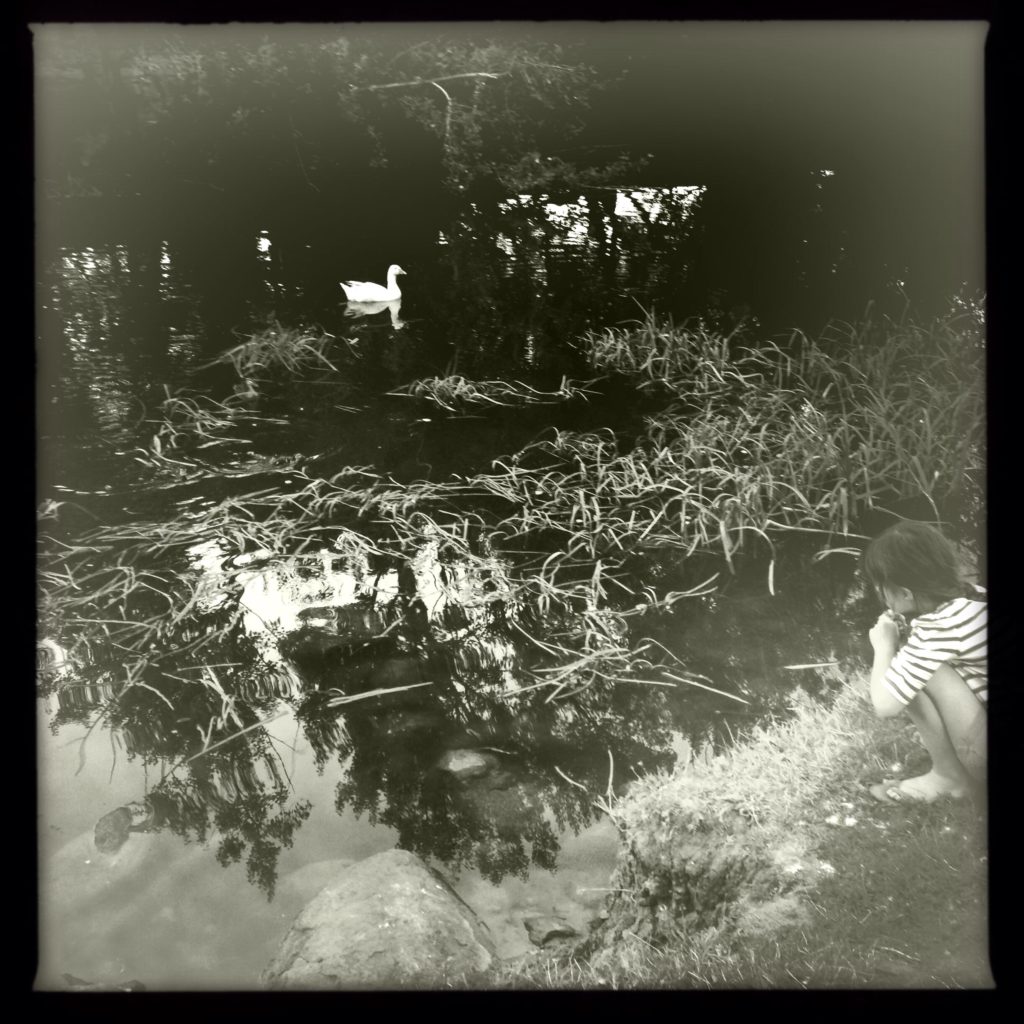
It was vastly different weather conditions in January, 2014, when I sat by the river in Richmond, Tasmania, on a family holiday watching the golden sunlight and the shadows dapple and form patterns on the water.
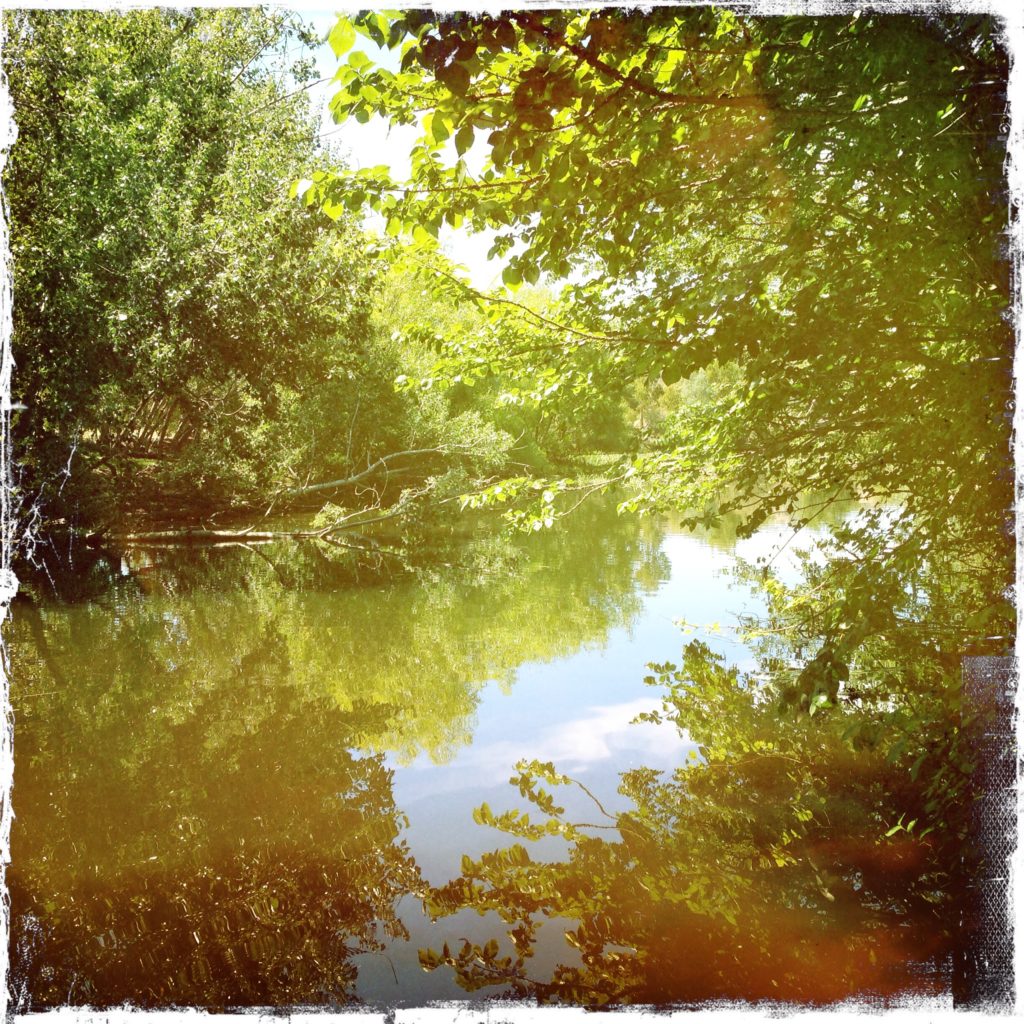
As with several of my books, an image came to me as swans glided past. I was luxuriating in the peace of the convict-built bridge and village – a place so seemingly tranquil, but which contained shadows.
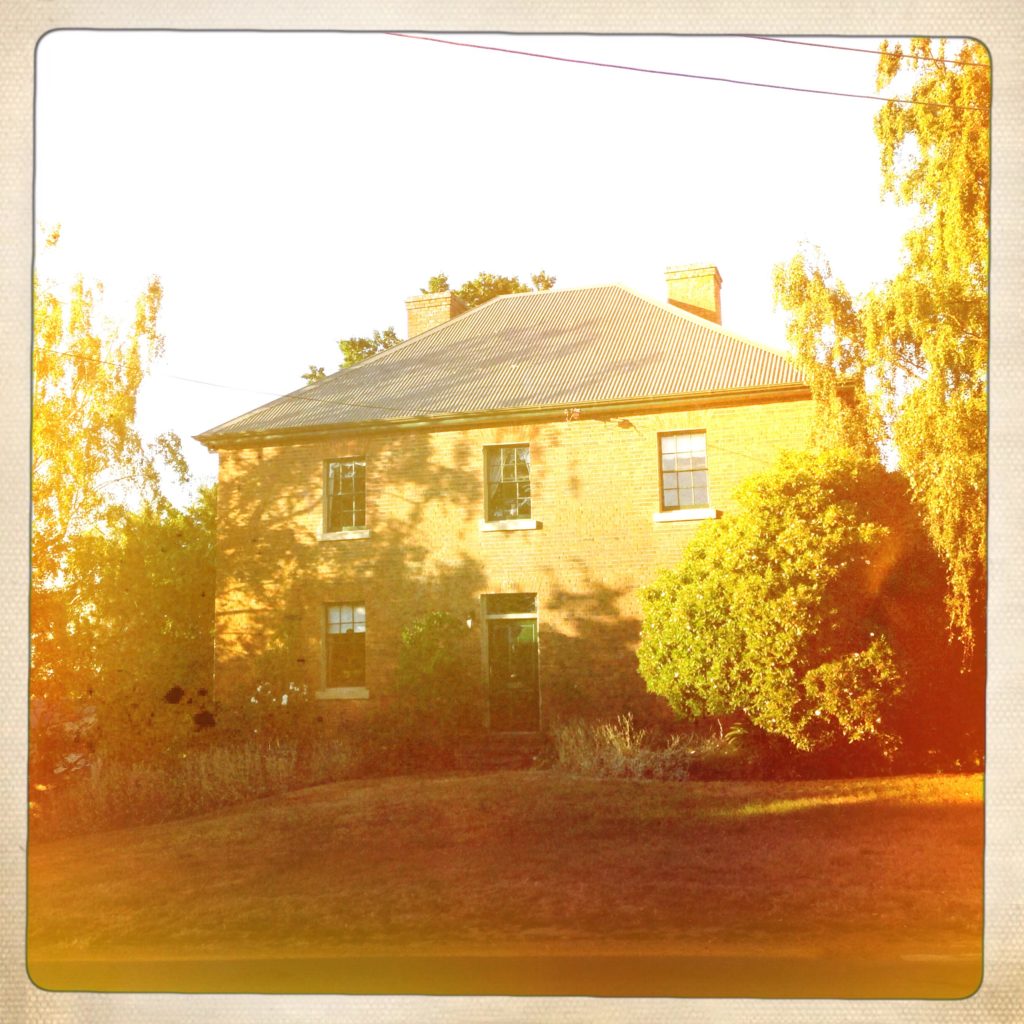
The scene that came to me was of a young man sitting by the river writing a note, confessing to a crime he believes he is guilty of. Two girls rowing a boat on the water sing ‘Buttons and Bows’ and suddenly the serenity of the sleepy Tasmanian hamlet is shattered when one of the girl’s oars snags on a floating body.
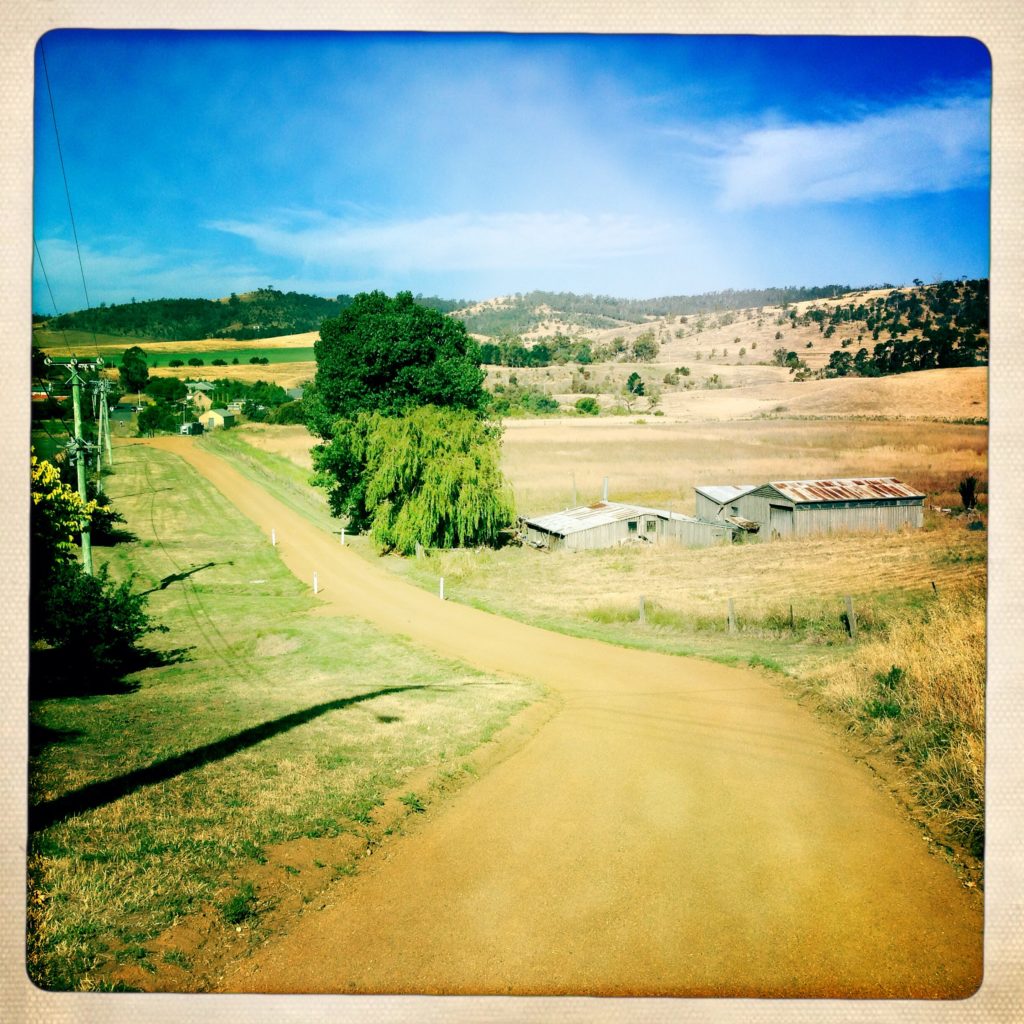
This was the beginning of The Secret Echoes, which I just finished this week. From the very start, I knew it would contain certain elements: the golden Tasmanian sunshine and mellow light, a bridge that harboured secrets, a supposed ghost that haunted the bridge, letters, a poison-pen writer, the death of the town’s most popular golden girl. Swans, secrets and shadows. I couldn’t wait to start writing to discover who the body was in the river and whether the boy confessing to the crimes was as guilty as he believed. The working title of the book was Sweetwater.
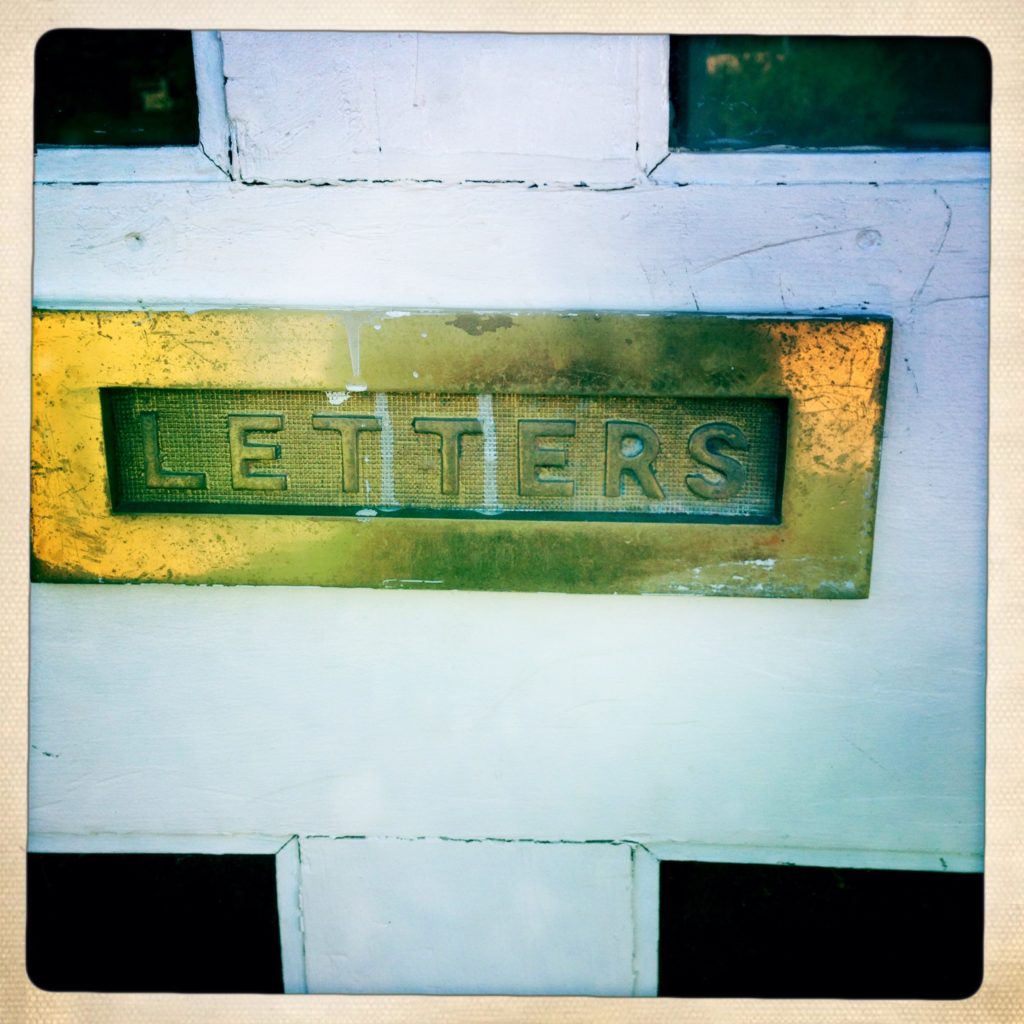
As the book progressed those elements remained but it took an unexpected journey. I always knew I wanted to set it in the 1950s, but a 1920s thread also felt strong and a few months into writing, a fairly minor character in the 1880s became increasingly insistent to be featured more. This put the book back about six months, as I had to put it aside to research 1800s Australia before I felt confident about being able to portray this headstrong character and her life and times.
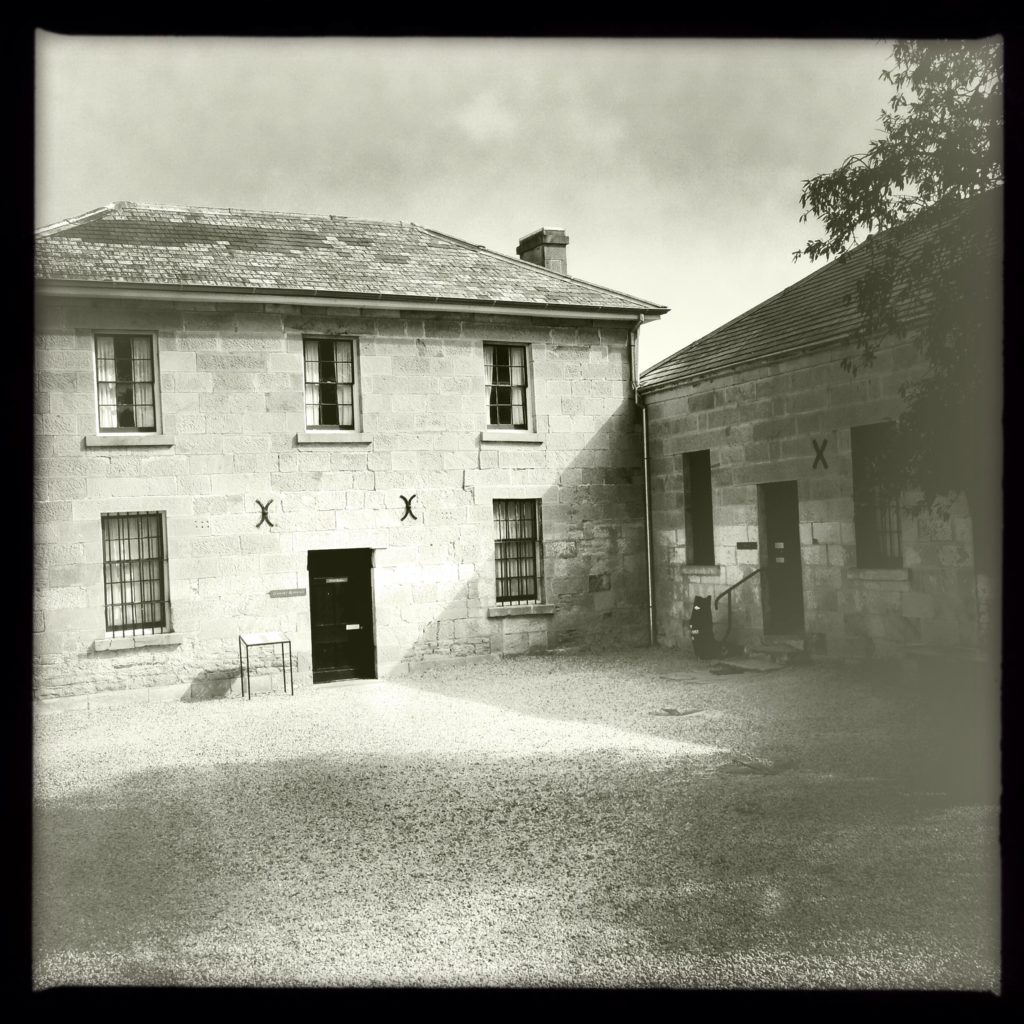
My journal entry for August, 2014 records I had just begun the first draft.
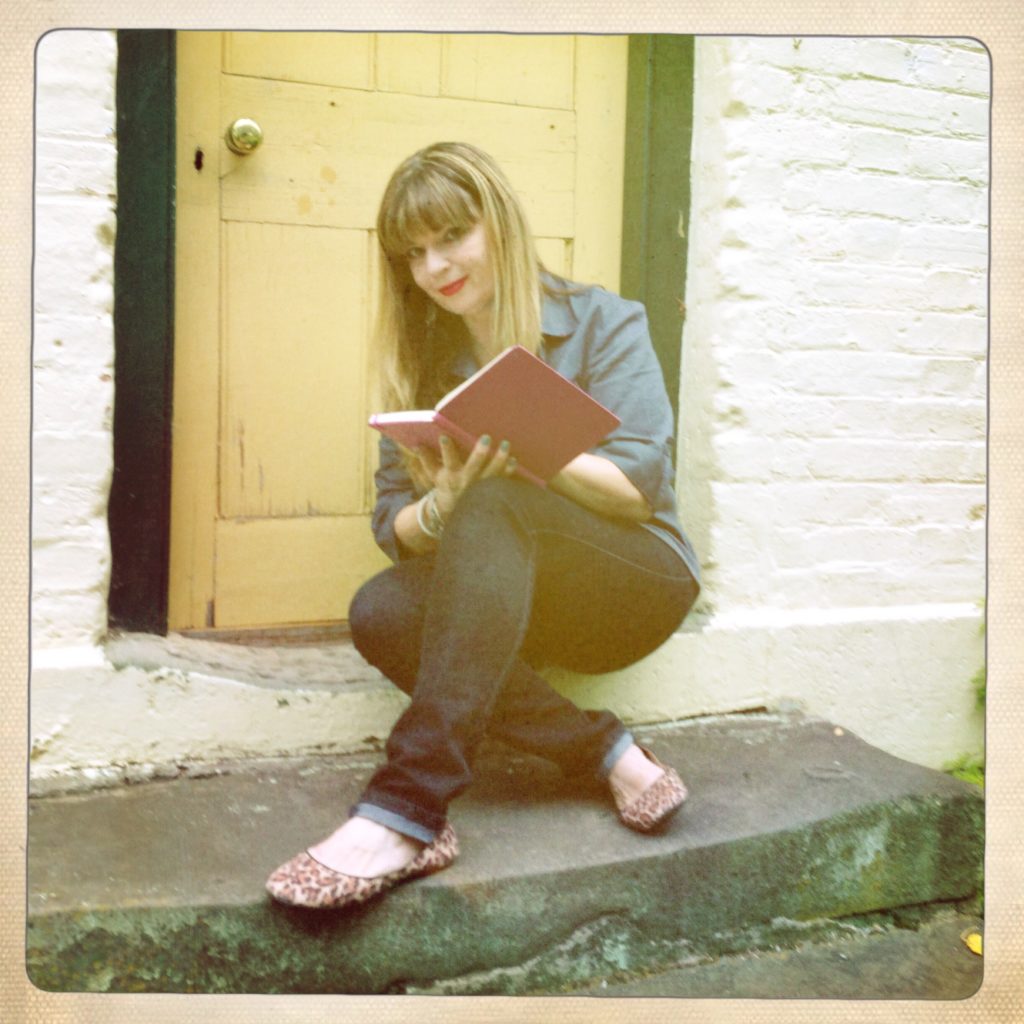
I could not have conceived at that time how dramatically different my life would be from that day I began the opening scene. My family faced several major challenges: we moved house from the city to the country. In our city life we had to deal with bullying developers, bullying children (and their even worse bullying mothers) and a health diagnosis for one member of our family that was shattering.
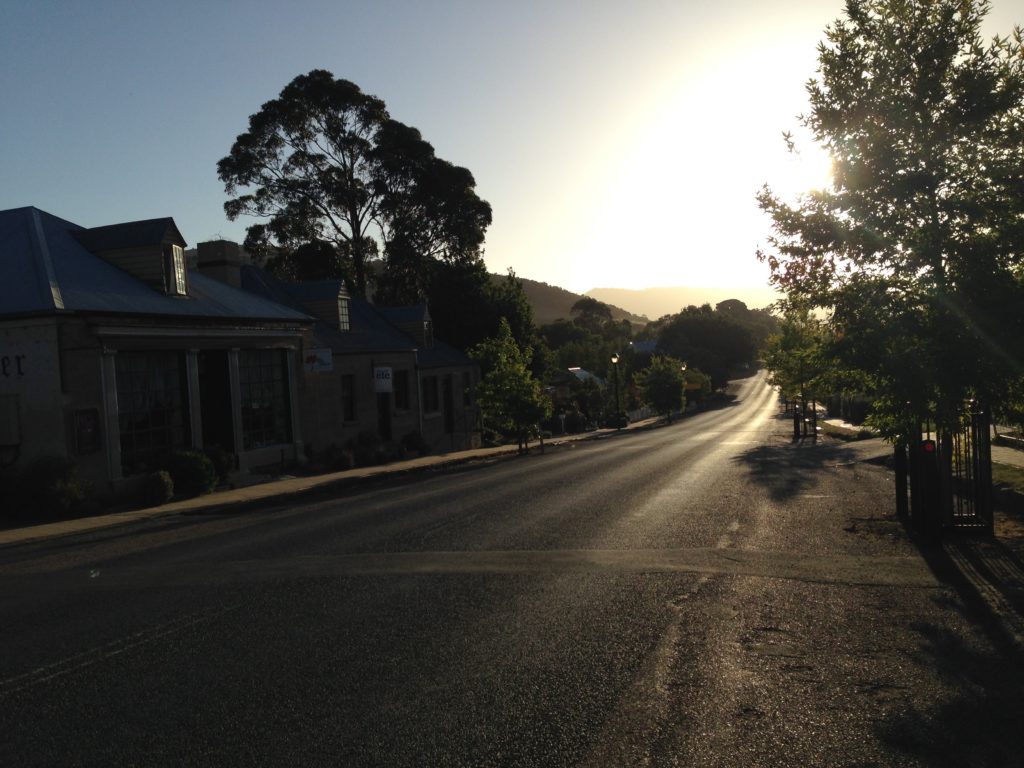
But throughout the chaos, I kept returning to the book and although it took me a few months longer than planned, I was delighted to finish the final segment, Wattle Dreaming, this week of The Secret Echoes.
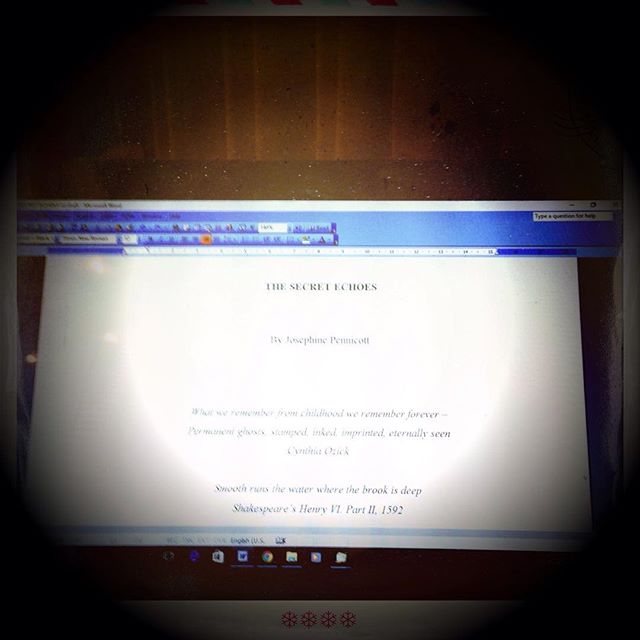
I hope it makes it way with confident strong legs out into the world and finds a readership. With the New Moon (the Black Moon) just having passed us, I made wishes and blessings for its journey. And I’m excited to begin the next book, which has been calling impatiently to me for years.
Love and Light,
From above the clouds,
Josephine
THE GIRL ON THE TRAIN, by
Paula Hawkins: really great suspense novel. Kept me up most of the night. The
alcoholic narrator is dead perfect.
I discovered Black Rabbit Hall on an outing to the Blue Mountains, after finishing my train book on the journey up. Fellow bibliophiles will understand my panicked dash to the local bookshop before my city train was due. 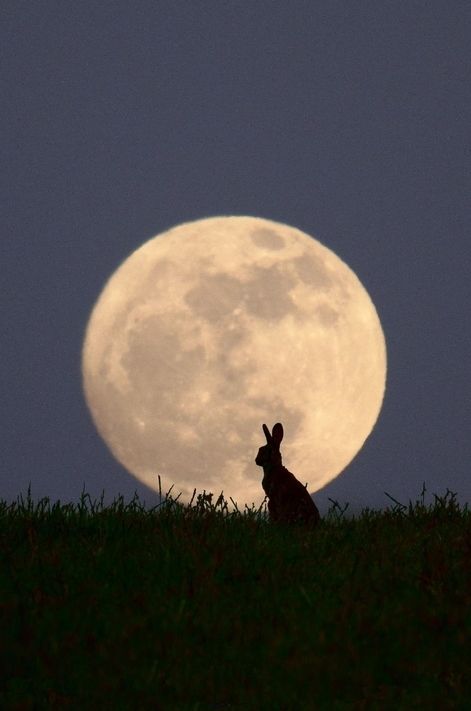 Browsing in Blackheath’s Gleebooks, I picked up Black Rabbit Hall with its intriguing title and lovely cover design. I was instantly hooked by the synopsis: mysterious Cornish mansion near creepy woods, the shadow of the past creeping into the present, family secrets held over decades – exactly the sort of book I love to read and write. Also the blurb by acclaimed Tasmanian John Harwood – who has achieved international success with his literary Gothic novels The Ghost Writer, The Séance and The Asylum – decided me. I’d never heard of Eve Chase, which isn’t surprising as Black Rabbit Hall is her debut novel, but it was proof that you don’t necessarily need glossy author photos and a large publicity campaign to sell a book. Sometimes the product sells itself.
Browsing in Blackheath’s Gleebooks, I picked up Black Rabbit Hall with its intriguing title and lovely cover design. I was instantly hooked by the synopsis: mysterious Cornish mansion near creepy woods, the shadow of the past creeping into the present, family secrets held over decades – exactly the sort of book I love to read and write. Also the blurb by acclaimed Tasmanian John Harwood – who has achieved international success with his literary Gothic novels The Ghost Writer, The Séance and The Asylum – decided me. I’d never heard of Eve Chase, which isn’t surprising as Black Rabbit Hall is her debut novel, but it was proof that you don’t necessarily need glossy author photos and a large publicity campaign to sell a book. Sometimes the product sells itself. 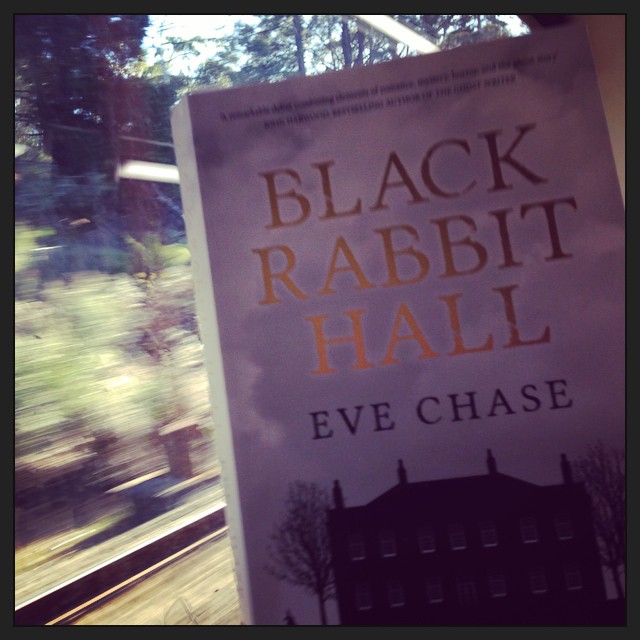 My trip back down the mountain passed in a blur as I lost myself in the world of Black Rabbit Hall. I was disappointed to find myself back in Central Station in Sydney, as I wanted to keep reading.
My trip back down the mountain passed in a blur as I lost myself in the world of Black Rabbit Hall. I was disappointed to find myself back in Central Station in Sydney, as I wanted to keep reading. 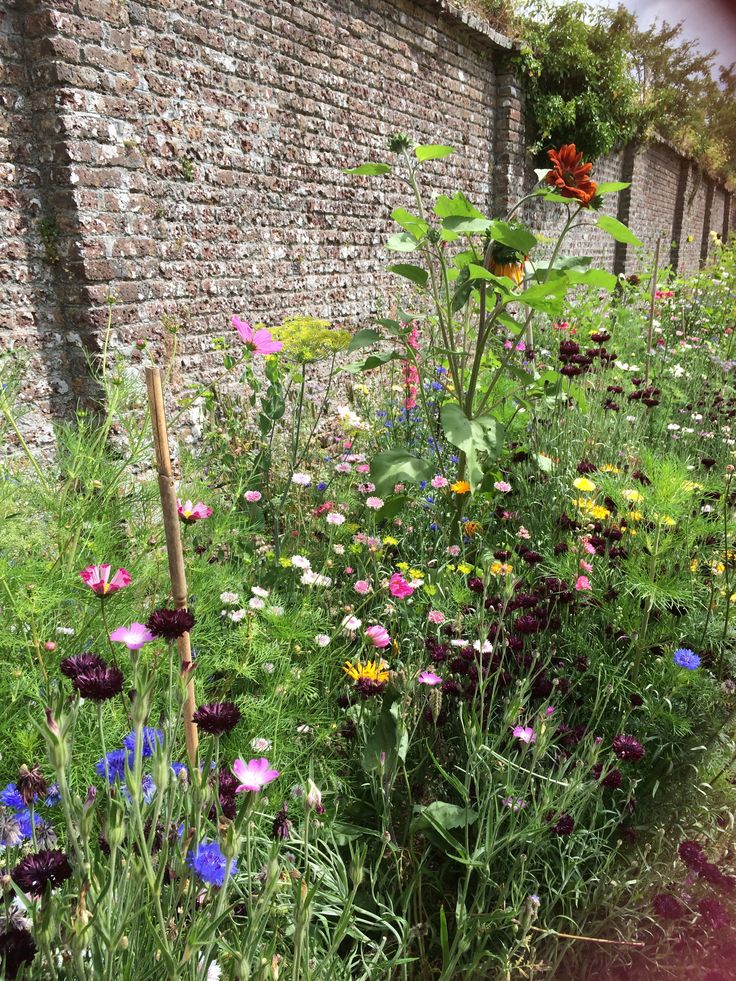 The books parallel storyline is set between the 1960s and the present day. Lorna Smith in the present-day thread is scouting a suitable venue for her wedding, and finds herself drawn to the mysterious, crumbling, faded gentry beauty of Pencraw House (Black Rabbit Hall) against her fiancée’s wishes.
The books parallel storyline is set between the 1960s and the present day. Lorna Smith in the present-day thread is scouting a suitable venue for her wedding, and finds herself drawn to the mysterious, crumbling, faded gentry beauty of Pencraw House (Black Rabbit Hall) against her fiancée’s wishes.
In the 1960s thread, the Alton Family, who spend country holidays at Black Rabbit Hall, suffer a tragedy. Life for the Alton children alters forever, and the families destiny entangles with Lorna Smith’s in the present day thread. 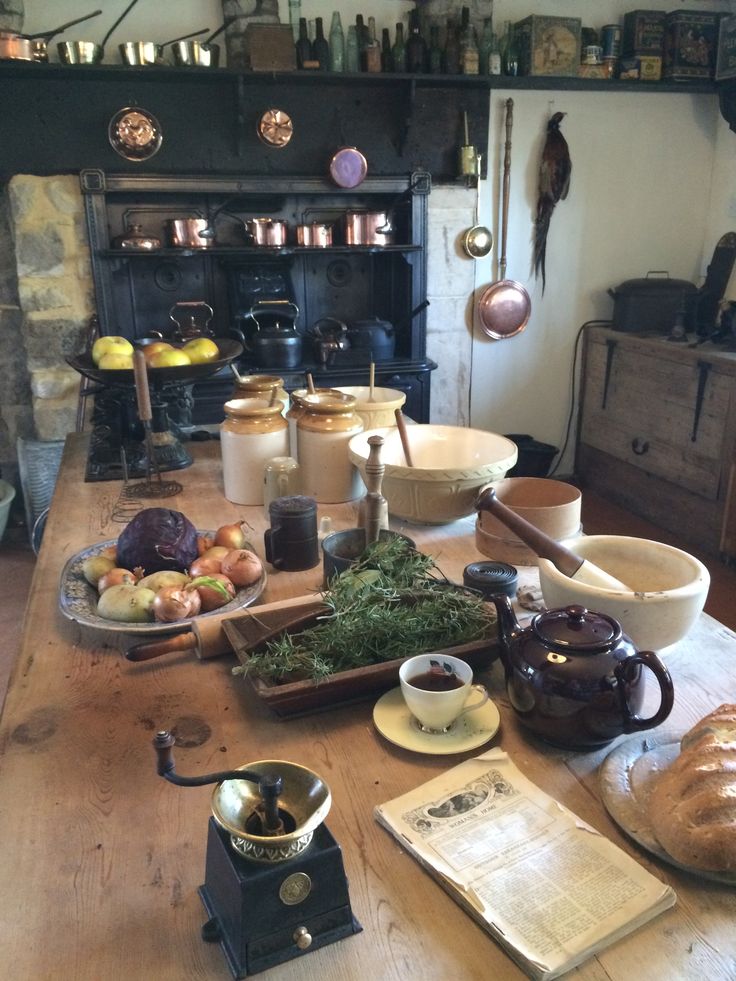 Black Rabbit Hall is an intrinsically English novel, and does remind me in tone of Dodie Smith’s, I Capture the Castle. The 1960s thread, narrated by the very likeable Amber Alton, is strong and I revelled in the description of the the kitchen at Black Rabbit Hall, with ‘cornflower-blue walls – blue to keep the flies away – and a larder with broken lock. Bread dough rising in china bowls like pregnant bellies: pig guts soaking in salted water before being stuffed and turned into hog’s pudding; tin buckets writhing with conger eels, buckets of crabs.’ And Cornish food such as the dreaded ‘Kiddly’ broth. Eve Chase deftly brings the mysterious hall, with its groaning pipes, black and white tiled hall and constant power cuts to life with lines such as: ‘drawers stuffed with all manner of odd things: ration books, gas masks, a loaded pistol, a sheaf of golden curls from a dead baby, who, Daddy says, would have been our great-aunt had she lived. Oh yes, and Princess Margaret’s glove. That’s about as exciting as it gets.’
Black Rabbit Hall is an intrinsically English novel, and does remind me in tone of Dodie Smith’s, I Capture the Castle. The 1960s thread, narrated by the very likeable Amber Alton, is strong and I revelled in the description of the the kitchen at Black Rabbit Hall, with ‘cornflower-blue walls – blue to keep the flies away – and a larder with broken lock. Bread dough rising in china bowls like pregnant bellies: pig guts soaking in salted water before being stuffed and turned into hog’s pudding; tin buckets writhing with conger eels, buckets of crabs.’ And Cornish food such as the dreaded ‘Kiddly’ broth. Eve Chase deftly brings the mysterious hall, with its groaning pipes, black and white tiled hall and constant power cuts to life with lines such as: ‘drawers stuffed with all manner of odd things: ration books, gas masks, a loaded pistol, a sheaf of golden curls from a dead baby, who, Daddy says, would have been our great-aunt had she lived. Oh yes, and Princess Margaret’s glove. That’s about as exciting as it gets.’ 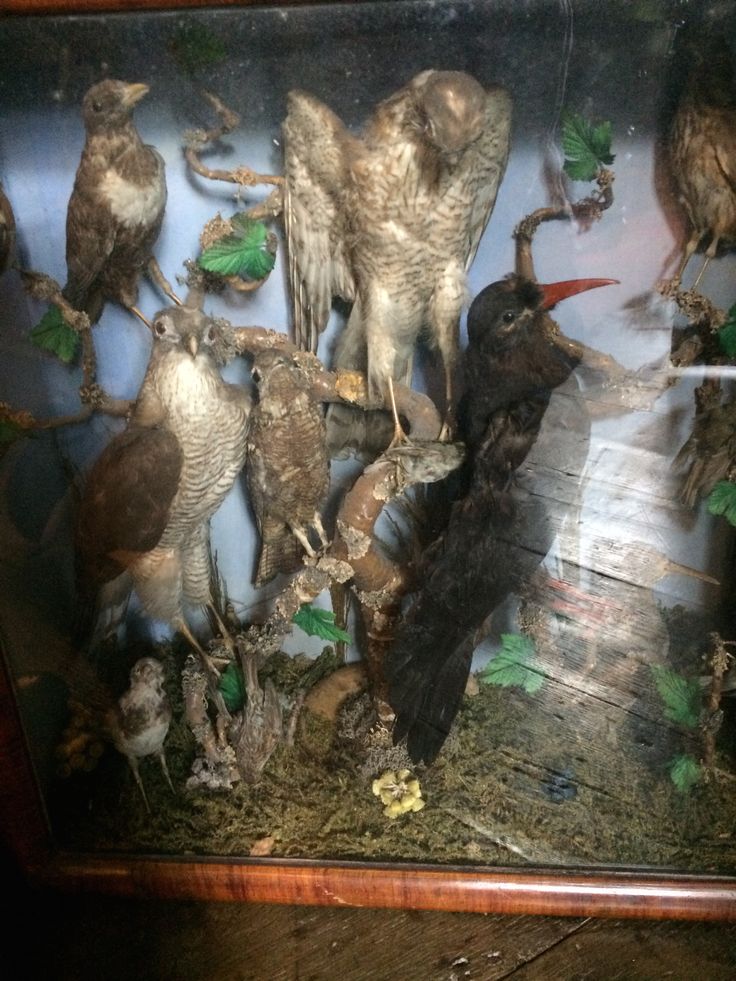
I enjoyed the slightly surreal touches, such as the image of vast amount of rabbits around the hall at dusk. The hall faces west, and the silhouetted rabbits resemble shadow puppets, giving Pencraw House its name. Time is ‘syrupy slow,’ none of the clocks work properly, and nobody seems to care.
It’s a beautifully written page-turner. My only very slight gripe was that the ending was a little too tidy and happy-ever-after for my taste, but I loved the journey into Black Rabbit Hall and it has stayed with me. This is one of those plot-driven story books that you want to gobble up, and keep the pages turning past the witching hour. 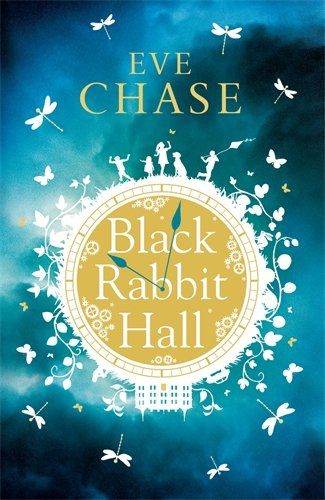 I look forward to reading Eve’s next novel. Black Rabbit Hall is published by Michael Joseph. “If Daphne Du Maurier and Ruth Rendell in Barbara Vine mode had been able to collaborate, they might have come up with something like Black Rabbit Hall: Rebecca meets A Fatal Inversion, so to speak. But Eve Chase is very much her own novelist, as fascinated by the varieties of love and affection that hold families together as by the forces that can tear them apart. A remarkable debut from an exceptionally talented and accomplished author.” —John Harwood, author of The Ghost Writer Eve’s website can be found HERE All images in this post with the exception of my train book photo via Eve’s Pinterest Inspiration boards. HERE.
I look forward to reading Eve’s next novel. Black Rabbit Hall is published by Michael Joseph. “If Daphne Du Maurier and Ruth Rendell in Barbara Vine mode had been able to collaborate, they might have come up with something like Black Rabbit Hall: Rebecca meets A Fatal Inversion, so to speak. But Eve Chase is very much her own novelist, as fascinated by the varieties of love and affection that hold families together as by the forces that can tear them apart. A remarkable debut from an exceptionally talented and accomplished author.” —John Harwood, author of The Ghost Writer Eve’s website can be found HERE All images in this post with the exception of my train book photo via Eve’s Pinterest Inspiration boards. HERE.
Gaiman illustrates this with the most breath-stopping testament to what we endure for stories as they in turn help us endure, by way of his 97-year-old cousin Helen, a Polish Holocaust survivor:
“A few years ago, she started telling me this story of how, in the ghetto, they were not allowed books. If you had a book … the Nazis could put a gun to your head and pull the trigger – books were forbidden. And she used to teach under the pretense of having a sewing class… a class of about twenty little girls, and they would come in for about an hour a day, and she would teach them maths, she’d teach them Polish, she’d teach them grammar…
One day, somebody slipped her a Polish translation of Margaret Mitchell’s novel Gone with the Wind. And Helen stayed up – she blacked out her window so she could stay up an extra hour, she read a chapter of Gone with the Wind. And when the girls came in the next day, instead of teaching them, she told them what happened in the book. And each night, she’d stay up; and each day, she’d tell them the story.
And I said, “Why? Why would you risk death – for a story?”
And she said, “Because for an hour every day, those girls weren’t in the ghetto – they were in the American South; they were having adventures; they got away.
I think four out of those twenty girls survived the war. And she told me how, when she was an old woman, she found one of them, who was also an old woman. And they got together and called each other by names from Gone with the Wind…
We [writers] decry too easily what we do, as being kind of trivial – the creation of stories as being a trivial thing. But the magic of escapist fiction … is that it can actually offer you a genuine escape from a bad place and, in the process of escaping, it can furnish you with armour, with knowledge, with weapons, with tools you can take back into your life to help make it better… It’s a real escape – and when you come back, you come back better-armed than when you left.
Helen’s story is a true story, and this is what we learn from it – that stories are worth risking your life for; they’re worth dying for. Written stories and oral stories both offer escape – escape from somewhere, escape to somewhere.
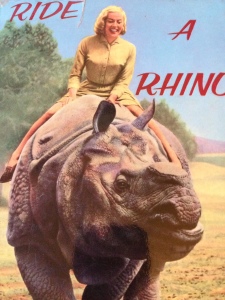 I’m delighted to present my next author for my Ride the Rhino Inspiration posts – the beautiful Kate Forsyth.
I’m delighted to present my next author for my Ride the Rhino Inspiration posts – the beautiful Kate Forsyth.  I feel as if I’ve known Kate forever. We we were both briefly involved with The Drinklings many years ago, when we enjoyed wine and book chats in Sydney with a group of writers and we’ve spoken on a couple of panels together.
I feel as if I’ve known Kate forever. We we were both briefly involved with The Drinklings many years ago, when we enjoyed wine and book chats in Sydney with a group of writers and we’ve spoken on a couple of panels together. 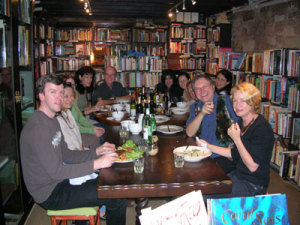 She always inspires me with her intelligence, talent and her generous nature towards other authors. When I began this series of inspirational interviews I knew I had to have Kate aboard. When we last spoke at the Newtown Writers Tent for Better Read than Dead bookshop, we ended up in rain-soaked Newtown talking for hours in a cafe about writing, publishing, our children and the juggling act we have to go through. It’s a true testimony to how highly I regard her that when I suffered a major heartbreak with my publishing career, it was Kate I trusted, sending off a frantic email asking for her advice. In the very competitive world of publishing, Kate has always sought to encourage other authors to fulfil their dreams and destiny.
She always inspires me with her intelligence, talent and her generous nature towards other authors. When I began this series of inspirational interviews I knew I had to have Kate aboard. When we last spoke at the Newtown Writers Tent for Better Read than Dead bookshop, we ended up in rain-soaked Newtown talking for hours in a cafe about writing, publishing, our children and the juggling act we have to go through. It’s a true testimony to how highly I regard her that when I suffered a major heartbreak with my publishing career, it was Kate I trusted, sending off a frantic email asking for her advice. In the very competitive world of publishing, Kate has always sought to encourage other authors to fulfil their dreams and destiny. 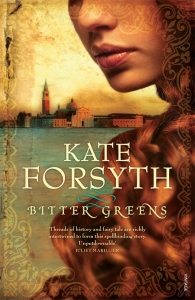 Kate is an international bestselling author of 36 novels spanning a range of genres. She writes for both children and adults and has won many awards, including Five Aurealis Awards in a single year and a CYBIL award in the United States. Her bestselling novel Bitter Greens won the American Library Association Award for Best Historical Novel of 2015 and the library journal US Best Historical Novel. Kate has a doctorate in fairytale studies from the University of Technology in Sydney and a BA in literature and a MA in creative writing. Writing talent is obviously in her blood: she is a descendant of Charlotte Waring, the author of the first book for children published in Australia, “A Mother’s Offering to her Children” (1841).
Kate is an international bestselling author of 36 novels spanning a range of genres. She writes for both children and adults and has won many awards, including Five Aurealis Awards in a single year and a CYBIL award in the United States. Her bestselling novel Bitter Greens won the American Library Association Award for Best Historical Novel of 2015 and the library journal US Best Historical Novel. Kate has a doctorate in fairytale studies from the University of Technology in Sydney and a BA in literature and a MA in creative writing. Writing talent is obviously in her blood: she is a descendant of Charlotte Waring, the author of the first book for children published in Australia, “A Mother’s Offering to her Children” (1841).Kate updates her very inspiring website regularly with loads of generous writing tips and fascinating interviews, and also runs writing retreats in the Cotswolds through the Australian Writers’ Centre. I hope you find as much inspiration as I did from Kate’s Ride on the Rhino.
Hello, Happy New Year Greetings. With all the traumatic events happening globally I’ve felt in need of creative and soul inspiration, and so I’ve begun a new series on Tale Peddler called The Eye of the Rhino. It’s from Stella Adler, who said success in the arts requires ‘the skin of a rhinoceros but the soul of a rose’. 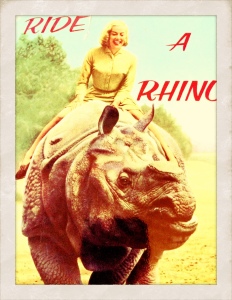 One observation I’ve made with my creative friends is they are tenacious. Creative success seems to involve a synthesis of Talent, Timing, Tenacity and Luck and it’s the tenacity aspect that interests me. What inspires some individuals to pursue their dreams despite inevitable disappointments along their path? I say inevitable as I’ve observed that even among my more successful creative friends, they have still had to overcome obstacles that you would never hear about on their social media accounts. I hope you enjoy this series and get as much inspiration from it as I do. First up is Anna Romer.
One observation I’ve made with my creative friends is they are tenacious. Creative success seems to involve a synthesis of Talent, Timing, Tenacity and Luck and it’s the tenacity aspect that interests me. What inspires some individuals to pursue their dreams despite inevitable disappointments along their path? I say inevitable as I’ve observed that even among my more successful creative friends, they have still had to overcome obstacles that you would never hear about on their social media accounts. I hope you enjoy this series and get as much inspiration from it as I do. First up is Anna Romer. 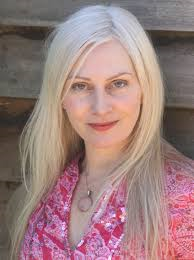 I’ve known Anna for many years. I thought she’d be an interesting artist to begin with as she had a long apprenticeship until her success with her book Thornwood House, an Australian Gothic mystery published by Simon and Shuster in September 2013. Thornwood House broke though Anna’s years of writing in oblivion and was a bestseller. Anna was a graphic artist and has travelled widely. In an alternative career path she’d have made a powerful energetic healer as she does unforgettable massages (personally experienced). Anna’s a highly individual person and one of the more interesting authors I’ve met. Shunning a lot of technology, she prefers the rhythm of her own imagination and the pulse of the bush that permeates her writing. Lyrebird Hill (her second novel, also an Australian Gothic mystery) was released in September 2014. Anna and I share a love of communicating by letters, Spirituality, Joseph Campbell. I’m delighted Anna accepted my invitation to discuss her creative inspirations for Eye of the Rhino.
I’ve known Anna for many years. I thought she’d be an interesting artist to begin with as she had a long apprenticeship until her success with her book Thornwood House, an Australian Gothic mystery published by Simon and Shuster in September 2013. Thornwood House broke though Anna’s years of writing in oblivion and was a bestseller. Anna was a graphic artist and has travelled widely. In an alternative career path she’d have made a powerful energetic healer as she does unforgettable massages (personally experienced). Anna’s a highly individual person and one of the more interesting authors I’ve met. Shunning a lot of technology, she prefers the rhythm of her own imagination and the pulse of the bush that permeates her writing. Lyrebird Hill (her second novel, also an Australian Gothic mystery) was released in September 2014. Anna and I share a love of communicating by letters, Spirituality, Joseph Campbell. I’m delighted Anna accepted my invitation to discuss her creative inspirations for Eye of the Rhino.
J – I know your writing path wasn’t a smooth trajectory. You spent many years working on another project which hasn’t yet been published. Can you talk about how it felt to work on that project and what it was like to cross over to the new genre you are working in with Thornwood House and Lyrebird Hill?
You’re quite right, my writing path was long and winding – and there were times I was convinced it was leading nowhere. Luckily for me, I’m utterly addicted to the writing process, and that’s what kept me going. One of my great passions along the way was a historical novel I worked on for many years. It was an adventure story set in a time when people were restrained by archaic traditions and strict social laws. My favourite thing about writing this story was developing characters who were feisty and strong-willed, who flouted those laws and went their own way. The research for this project was intensive. I spent years losing myself in books and pictures and movies, drawing maps and diagrams and timelines and, even dreaming about my characters until they felt like dear old friends. I was totally obsessed! Sadly, the plot was very flawed. In my mind’s eye I could see a beautiful, richly-layered adventure story, but I didn’t have the skills back then to pull it into shape. My agent suggested I set the story aside for a while and work on something with less demanding research. So I dumped my beloved project in the bottom drawer with all my other rejects, and went back to the drawing board. I decided my next novel would be set in Australia – a simple mystery story about a woman who inherits an abandoned house. I would throw in all the elements I loved: forgotten old letters, a buried diary, an overgrown garden, and a star-crossed love story. Most importantly, I’d keep my research minimal. Famous last words. Before I knew it, my story had grown convoluted roots that reached back to the 1940s. Suddenly I had a mountain of memoirs and war diaries and biographies to read! I wasn’t really fazed about tackling a completely new genre. Early on I’d attempted to write a horror-thriller (while I was under the thrall of Stephen King), and when that bombed I tried my hand at romance, crime, fantasy. Each of the seven novels in my reject drawer is a different genre! But thanks to the lessons I learned from all my failed projects, I developed a much better grasp on how to structure a novel. I learned that each genre has its own specific requirements; romance focuses on the relationship, while a thriller constantly threatens the hero’s life.
And yet the core of any story is the same. I’m a huge fan of Joseph Campbell’s “Hero’s Journey” which explores the idea that all stories – myths, fairytales, and legends – share the same basic components. A troubled character embarks on a quest to solve her problem; she undergoes a series of tests that ultimately transform her; by sacrificing what she wants, she achieves what it is she most needs – and in the process, she becomes whole. 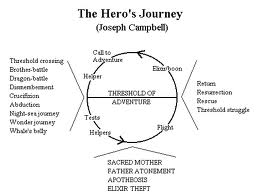 This theory sounds formulaic, but I found it wonderfully freeing. Once I started working with it, all other elements specific to genre fell into place. Suddenly my plot was holding together. The characters were making sense. The story had purpose, and because I now knew where I was going, the process became much more fun.
This theory sounds formulaic, but I found it wonderfully freeing. Once I started working with it, all other elements specific to genre fell into place. Suddenly my plot was holding together. The characters were making sense. The story had purpose, and because I now knew where I was going, the process became much more fun. 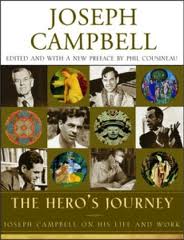 J – What has kept you going throughout all the years you have worked away in solitude on your books? What helped to foster your own self-belief in your talent and enabled you to have a rhinoceros skin?
J – What has kept you going throughout all the years you have worked away in solitude on your books? What helped to foster your own self-belief in your talent and enabled you to have a rhinoceros skin?
I’d always loved romantic adventure stories that changed the way I thought or felt – and that’s what I wanted to write. But my early attempts made it clear how much I needed to learn! The thing that kept me going all those years, was the challenge of somehow achieving my vision. It was like a carrot dangling just ahead of me, always out of reach – but soooo delicious-looking. I wanted to do justice to the stories I could see in my head, and the only way to do that was to develop my storytelling skills. I embarked on a mission, reading every how-to book I could lay my hands on, trying every technique. More importantly, I wrote and wrote. And whenever I looked back over my work and found even the tiniest improvement, a fresh rush of excitement would spur me on. I was never under the illusion that I was a particularly good writer. My self-belief fought a constant battle with my self-doubt. But I really loved learning about plot and structure and character development … I still do! Concepts such as Joseph Campbell’s Hero’s Journey were endlessly fascinating to me. I was like a drug addict, continually seeking my next fix of story know-how. Even if I’d wanted to stop, I couldn’t have.
J – Love of the Australian bush permeates Thornwood House. To me, the book really throbs with nature cycles. How important is it to you as an artist to live in the bush in the solitude you obviously enjoy? Could you have written Thornwood House in a city? 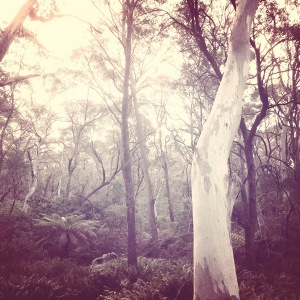 I’m a huge fan of Diana Gabaldon who wrote the immensely popular Outlander series. Her first book is set in Scotland in the 1600s, and it grippingly evokes the life and culture of that time.
I’m a huge fan of Diana Gabaldon who wrote the immensely popular Outlander series. Her first book is set in Scotland in the 1600s, and it grippingly evokes the life and culture of that time.
I was fascinated to learn that Diana wrote her first book in the series without ever having visited Scotland. I read about how she listened to folk song recordings to hone her ear to Scottish accents. She quizzed experts, and no doubt used her own formidable researching skills to make her story world so believable. This taught me that it’s possible to write convincingly about any location or historical period or life experience – if you do enough research. But for me, as with most writers, immersing myself in a location brings additional insight and depth to that research. I love to sit and observe. I love to drink in the smell of wildflowers, or walk through the bush at night without a torch, or fire off a few rounds from a double-action revolver, or pick up an eastern brown snake so I can confidently describe the fine velvety nap of its skin. 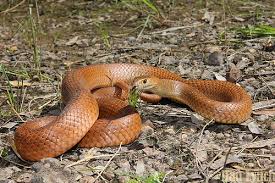 Besides all that, I’m the sort of person who thrives in a natural environment. If I spend a lot of time in town I get frazzled; there’s too much sensory input. My brain likes wide open spaces, and the sound of wind in the trees, and the pebbly smell of the river. I need to be among those nature cycles to understand them and allow them to permeate me. I know I sometimes get carried away with my descriptions, waffling on about leaves and flowers – but that’s how I write. Without the energy of the natural world flowing through my stories, I would quickly lose my excitement for them.
Besides all that, I’m the sort of person who thrives in a natural environment. If I spend a lot of time in town I get frazzled; there’s too much sensory input. My brain likes wide open spaces, and the sound of wind in the trees, and the pebbly smell of the river. I need to be among those nature cycles to understand them and allow them to permeate me. I know I sometimes get carried away with my descriptions, waffling on about leaves and flowers – but that’s how I write. Without the energy of the natural world flowing through my stories, I would quickly lose my excitement for them. 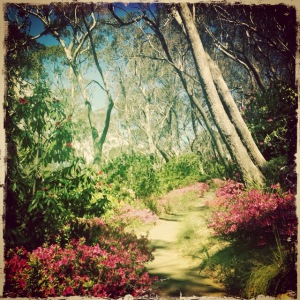 J – Do you have any advice or insight for anybody who is contemplating changing their career and embracing a more creative path? Go for it! For me, the best advice regarding creativity comes from Joseph Campbell: “Follow your bliss.”
J – Do you have any advice or insight for anybody who is contemplating changing their career and embracing a more creative path? Go for it! For me, the best advice regarding creativity comes from Joseph Campbell: “Follow your bliss.”  If you hanker to paint, then paint; if you yearn to tell stories, then do that. If you want to knit, or cook, or lose yourself in the garden – then embrace your creative yearnings with a full heart. Invest a lot of love into what you do, and don’t worry if you have to spend years working other jobs to support it. Walking a creative path is not always easy, but it’s a worthy challenge. Your life will be all the richer for it. And if it makes your soul sing, what is there to lose?
If you hanker to paint, then paint; if you yearn to tell stories, then do that. If you want to knit, or cook, or lose yourself in the garden – then embrace your creative yearnings with a full heart. Invest a lot of love into what you do, and don’t worry if you have to spend years working other jobs to support it. Walking a creative path is not always easy, but it’s a worthy challenge. Your life will be all the richer for it. And if it makes your soul sing, what is there to lose?

Anna Romer, Josephine Pennicott and Anna’s sister Sarah who looks after her social media presence. Lucky Anna!
J – I know you don’t have a very active online presence; although you’re blessed with a sister who maintains your Facebook page. What is your take on social media for artists? I’m certainly blessed with a wonderful sister! In fact I have two wonderful sisters who rave about my books to everyone they meet – lucky me! Sarah saves my poor old brain cells by managing our social media page, which allows me to focus more on my writing. I find the energy of the Internet disrupts my creative flow. I get jittery when I’m online, and afterwards my thoughts feel quite scattered. For inspiration to flow, I need to be relaxed and centred. As an artist, you have to weigh up the benefits of spending time promoting your work on social media, against the advantages of using that time to develop and layer your work. For me, my stories are simply more important. I don’t consider myself a natural-born talent at writing. I have to work ridiculously long hours, drafting and re-drafting and editing my stories into shape before I’m satisfied that they’re ready to present to my readers. I’m always acutely aware that for a reader, a book is an investment. Not just of money, but of many hours of their time. I want to give my readers my very best, and this requires that I sacrifice nonessentials such as social media. I’m also a strong believer in word-of-mouth – if you hone your craft and put your heart and soul into creating an entertaining story, then there’ll be readers who will utterly love your books … and that’s really what it’s all about, isn’t it? 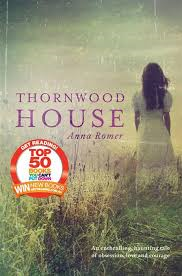 J – Thornwood House has a dark mystery at its foundations. How tightly do you plot your books? Are you somebody who likes to free-fall into the story and allow it to come through you; or do you prefer a more tightly-plotted book? How did writing Lyrebird Hill differ from the first book? I start any project with an enormous amount of brainstorming, researching, and planning where I want the story to go. By the time I’m ready to begin, I have a tightly plotted outline. But when I’m writing I tend to lose myself in the story. I forget all my well laid plans and get carried off by the adventure. Sooner or later I hit a brick wall, which sends me scurrying back to my outline. I replot, work out how to tie up the new loose ends I’ve created, and then freefall back into my characters’ lives.
J – Thornwood House has a dark mystery at its foundations. How tightly do you plot your books? Are you somebody who likes to free-fall into the story and allow it to come through you; or do you prefer a more tightly-plotted book? How did writing Lyrebird Hill differ from the first book? I start any project with an enormous amount of brainstorming, researching, and planning where I want the story to go. By the time I’m ready to begin, I have a tightly plotted outline. But when I’m writing I tend to lose myself in the story. I forget all my well laid plans and get carried off by the adventure. Sooner or later I hit a brick wall, which sends me scurrying back to my outline. I replot, work out how to tie up the new loose ends I’ve created, and then freefall back into my characters’ lives. 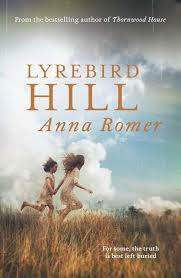 Lyrebird Hill was a very different writing experience to my first book; with Thornwood House I had the luxury of time. Years, in fact. The tight deadlines on Lyrebird Hill gave me no choice but to knuckle down and get the story written as quickly as possible. I didn’t have time to stop and agonise over the plot, or waffle off on tangents. I wrote only what I believed was necessary, and as a result went through a huge learning curve. It was crazy, daunting, obsessive … and bucket-loads of fun! And I think the story is better because of it.
Lyrebird Hill was a very different writing experience to my first book; with Thornwood House I had the luxury of time. Years, in fact. The tight deadlines on Lyrebird Hill gave me no choice but to knuckle down and get the story written as quickly as possible. I didn’t have time to stop and agonise over the plot, or waffle off on tangents. I wrote only what I believed was necessary, and as a result went through a huge learning curve. It was crazy, daunting, obsessive … and bucket-loads of fun! And I think the story is better because of it. 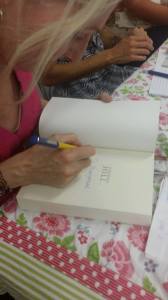 J – Are you a notebook person, or a writing online type of person? Do you prefer to draft on paper or computer?
J – Are you a notebook person, or a writing online type of person? Do you prefer to draft on paper or computer?
I’m very much a notebook person. I usually have several notebooks per novel, which I refer to constantly. I love the tactile feeling of writing on paper – scribbling over words and rewriting, cutting out bits and moving them somewhere else, gluing in photos, drawing maps and diagrams and charts… bliss! Being a visual person, I love the chaos and colours of my notebooks and find working in them a very relaxing way to let the ideas flow. I seem to be sensitive to electronic equipment, and because I spend so much time staring at a computer screen – drafting or transcribing my handwritten notes or editing – by the end of the day I end up feeling very drained. Breaking up my computer time with other activities such as drawing maps or filling out charts in my notebook helps to keep my mind fresh. 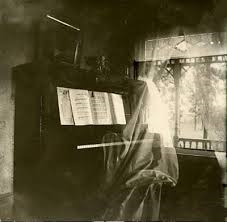 J – How do you feed your Muse? And what does your Muse look like? I know we share an interest in spiritual matters and so do you use that element of yourself in your writing process? I imagine my muse to be a sort of wild ghost-like creature in photo-negative form. I feed her on a varied diet of books: biographies, history, how-to manuals, as well as fiction – classic, popular, and sometimes downright trashy. She regularly feasts on films and a smorgasbord of music. She responds well to a hot bath, a walk in the bush, a river swim, or some therapeutic opp-shopping! She’s also fond of conflicting emotions, arguments, love gone wrong, betrayal and disappointment – so occasionally I let her binge on one of these as well. I believe that our creative selves are very much grounded in the spirit. For me, writing a book is a magical sort of experience. It requires a lot of trust in yourself to embark upon such a huge task and commit to finishing. And it also requires that you set aside your fears and expectations, and surrender to the process. I spend a lot of time reading books about how to improve the craft of writing, how to strengthen my weaknesses and hone my skills. But I think the success of any creative project really relies on less tangible elements. Instinct, impulse, intuition. It’s exhilarating to connect with your spiritual self and allow it to guide you; to follow those improbable threads of thought that you know will eventually weave something special into the story. I find that when I let go of all the writerly rules that I’ve learned in my how-to books, and instead focus on the pleasure my writing brings me, I can relax and enjoy the process. I trust my muse to guide me, and that’s when the magic really begins to happen.
J – How do you feed your Muse? And what does your Muse look like? I know we share an interest in spiritual matters and so do you use that element of yourself in your writing process? I imagine my muse to be a sort of wild ghost-like creature in photo-negative form. I feed her on a varied diet of books: biographies, history, how-to manuals, as well as fiction – classic, popular, and sometimes downright trashy. She regularly feasts on films and a smorgasbord of music. She responds well to a hot bath, a walk in the bush, a river swim, or some therapeutic opp-shopping! She’s also fond of conflicting emotions, arguments, love gone wrong, betrayal and disappointment – so occasionally I let her binge on one of these as well. I believe that our creative selves are very much grounded in the spirit. For me, writing a book is a magical sort of experience. It requires a lot of trust in yourself to embark upon such a huge task and commit to finishing. And it also requires that you set aside your fears and expectations, and surrender to the process. I spend a lot of time reading books about how to improve the craft of writing, how to strengthen my weaknesses and hone my skills. But I think the success of any creative project really relies on less tangible elements. Instinct, impulse, intuition. It’s exhilarating to connect with your spiritual self and allow it to guide you; to follow those improbable threads of thought that you know will eventually weave something special into the story. I find that when I let go of all the writerly rules that I’ve learned in my how-to books, and instead focus on the pleasure my writing brings me, I can relax and enjoy the process. I trust my muse to guide me, and that’s when the magic really begins to happen.
J – If you need to have the hide of a rhinoceros and the soul of a rose to succeed in the arts: how do you see your rhino hide as being? What are the qualities that have kept you going and where do you think you have gained those qualities from? And also ? how would you see yourself as the soul of a rose? What are your more sensitive qualities? 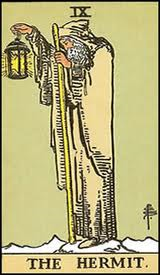 I’m probably the opposite – with the hide of a rose, and the heart of a rhino! I seem to absorb everything around me, as if there’s no filter between me and the outside world. Sights, sounds, smells … are all vibrant and mesmerising, and all too often overwhelming. I pick up other people’s moods, and I’m sensitive to vibes between others. That’s why I’m such a hermit – I need to remove myself from the fast pace of the world so I can reflect and channel my energies into my work. If I don’t, I burn out very quickly. I suppose my rhino hide is really a cloak of determination. It’s the one quality that’s kept me going. Whenever the cold winds of doubt or disappointment begin to blow, I draw my cloak more tightly around me and march on. Determination is a quality I’ve learned from the women in my family – my granny, my grandma, my mum. Incredibly resilient women, who forged on no matter what. I’m blessed to have been close to all three, and the qualities they passed along to me are among my most treasured possessions.
I’m probably the opposite – with the hide of a rose, and the heart of a rhino! I seem to absorb everything around me, as if there’s no filter between me and the outside world. Sights, sounds, smells … are all vibrant and mesmerising, and all too often overwhelming. I pick up other people’s moods, and I’m sensitive to vibes between others. That’s why I’m such a hermit – I need to remove myself from the fast pace of the world so I can reflect and channel my energies into my work. If I don’t, I burn out very quickly. I suppose my rhino hide is really a cloak of determination. It’s the one quality that’s kept me going. Whenever the cold winds of doubt or disappointment begin to blow, I draw my cloak more tightly around me and march on. Determination is a quality I’ve learned from the women in my family – my granny, my grandma, my mum. Incredibly resilient women, who forged on no matter what. I’m blessed to have been close to all three, and the qualities they passed along to me are among my most treasured possessions. 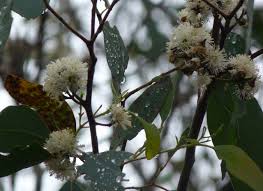
 Jo, I love your image of an artist’s soul resembling a rose … but mine doesn’t feel very rose-like. I’d say it’s closer to a stringybark blossom or hakea flower – thrives in the bush, is quietly productive, and mostly drought-hardy!
Jo, I love your image of an artist’s soul resembling a rose … but mine doesn’t feel very rose-like. I’d say it’s closer to a stringybark blossom or hakea flower – thrives in the bush, is quietly productive, and mostly drought-hardy!
Thank you, Anna Romer for sharing your inspiration with us. Thank you Jo, it was my pleasure.
And so I hope you enjoyed the inspiration from this post. Thanks again Anna for your generous sharing and if you did enjoy, please share with your social media friends who may also benefit. Look out for my next Eye of the Rhino post with another special guest. Anna Romer’s website is HERE Love, Light and Peace, Josephine xx
This interview with Anna is part of my Australian Women Writers Challenge for 2015.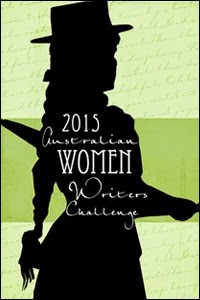
I originally read Dancing On Knives in its earlier incarnation as Full Fathom Five, published by Harper Collins Australia under Kate’s maiden name Kate Humphrey in 2003.
I loved it and so was curious to read the revamped Dancing on Knives, published 11 years later by Random House. 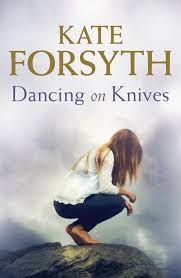 Sara, the lead character, suffers from panic attacks and hasn’t left her family home in five years. From the opening paragraph we learn Sara is afraid of many things. She reads the Tarot and has psychic gifts inherited from her Spanish Grandmother Consuelo – who bequeathed Sara her cards with the message that the Tarot will help her to see more clearly. Sara’s father, the tempestuous and self-centered Augusto Sanchez, a well-known artist, is discovered hanging upside down from a cliff in suspicious circumstances. On the night his body (half-alive, half-dead) is discovered, Sara draws three Tarot cards: the Emperor, the Tower and the Hanged Man. A clear signifier of Change, conflict and catastrophe. This is the set-up for a contemporary mystery set on the South Coast of New South Wales.
Sara, the lead character, suffers from panic attacks and hasn’t left her family home in five years. From the opening paragraph we learn Sara is afraid of many things. She reads the Tarot and has psychic gifts inherited from her Spanish Grandmother Consuelo – who bequeathed Sara her cards with the message that the Tarot will help her to see more clearly. Sara’s father, the tempestuous and self-centered Augusto Sanchez, a well-known artist, is discovered hanging upside down from a cliff in suspicious circumstances. On the night his body (half-alive, half-dead) is discovered, Sara draws three Tarot cards: the Emperor, the Tower and the Hanged Man. A clear signifier of Change, conflict and catastrophe. This is the set-up for a contemporary mystery set on the South Coast of New South Wales. 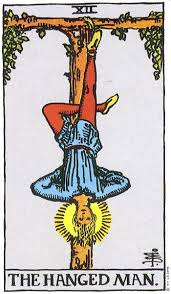
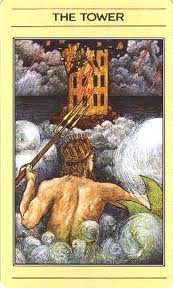
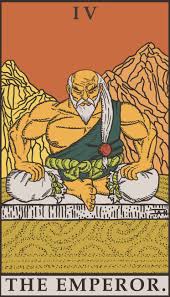 I loved the evocative descriptions of Sara’s readings: Gently she opened the box. A faint, evocative smell of cinnamon, saffron and bay leaves rose from within, a smell that conjured powerfully the ghost of Consuelo Sanchez. Sara inhaled, holding the sweet, dusty spiciness deep in her lungs as if it was incense, her fingers resting on the silk-wrapped cards within. After a long moment she let her breath escape in a sigh, took the pack of cards out and unwrapped it from its shroud of silk. She turned the first card over. Dancing On Knives is rich in poetic imagery. I enjoyed passages describing Sydney, and the Manly Aquarium, the giant sharks and stingrays which added a delicious otherworldly texture. And this passage below where studying one of her father’s paintings, Sara mourns her mother’s death: Memories crowded in on her. Flashes of her mother’s voice, a strand of red hair, smothering velvet, smoke against a blue sky. It seemed to Sara that memories sank to the depths of the sea and hardened there to strange shapes. What was once a coin became a worthless disc of rusted green. What was once an anchor became a corroded crucifix. Nothing stayed the same.
I loved the evocative descriptions of Sara’s readings: Gently she opened the box. A faint, evocative smell of cinnamon, saffron and bay leaves rose from within, a smell that conjured powerfully the ghost of Consuelo Sanchez. Sara inhaled, holding the sweet, dusty spiciness deep in her lungs as if it was incense, her fingers resting on the silk-wrapped cards within. After a long moment she let her breath escape in a sigh, took the pack of cards out and unwrapped it from its shroud of silk. She turned the first card over. Dancing On Knives is rich in poetic imagery. I enjoyed passages describing Sydney, and the Manly Aquarium, the giant sharks and stingrays which added a delicious otherworldly texture. And this passage below where studying one of her father’s paintings, Sara mourns her mother’s death: Memories crowded in on her. Flashes of her mother’s voice, a strand of red hair, smothering velvet, smoke against a blue sky. It seemed to Sara that memories sank to the depths of the sea and hardened there to strange shapes. What was once a coin became a worthless disc of rusted green. What was once an anchor became a corroded crucifix. Nothing stayed the same. 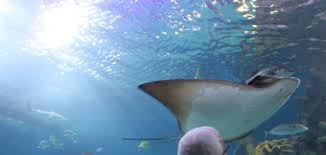 Kate has previously written a book of poetry and one reason I enjoyed Dancing On Knives was the poetic feel to the story. It does have a sense of gripping tides and dark shadows in the writing. I also delighted in magical elements such as the description of Consuelo’s recipe book, which brims with remedies, love spells, shampoo, beauty aids and herbal lore.
Kate has previously written a book of poetry and one reason I enjoyed Dancing On Knives was the poetic feel to the story. It does have a sense of gripping tides and dark shadows in the writing. I also delighted in magical elements such as the description of Consuelo’s recipe book, which brims with remedies, love spells, shampoo, beauty aids and herbal lore. 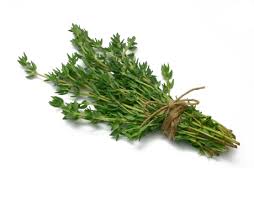 Consuelo still visits Sara after her death as a ghost, with tips such as advising her to make Thyme tea with honey for courage, or wear a sprig of Thyme in her hair.
Consuelo still visits Sara after her death as a ghost, with tips such as advising her to make Thyme tea with honey for courage, or wear a sprig of Thyme in her hair. 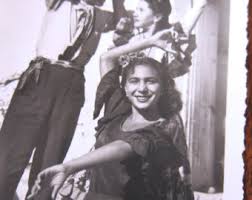 I loved the character of Consuelo and the rich relationship between her and Sara. I could envisage a whole book on Consuelo’s back story alone.
I loved the character of Consuelo and the rich relationship between her and Sara. I could envisage a whole book on Consuelo’s back story alone.  Augusto, with the face of a Spanish aristocrat, thin arrogant nose and cruel, sensuous mouth is an unlikeable character with his selfish treatment of his family. But you feel more sympathetic towards him when he has to mix with his conservative country in-laws, the Hallorans. Augusto loves to discuss God, Art and Death whereas the Halloans’s interests lie more in football and fishing. Augusto is intolerant of anybody who bores him and the Hallorans bore him intensely. Bridget, Sara’s mother, forces Augusto to move from Sydney to Narooma on the South Coast, where his in-laws live, to take up residence in the farmhouse left to Bridget by her father. The move proves disastrous. Augusto is a man who likes to not only paint women, but also to have sex with them first, believing the only way to know a woman is to bed her. When Augusto’s in a good mood he is passionate and King of Hearts, but he can swiftly transform when painting into the Demon-God. He mocks Sara’s attempts at art. His sons (the elder, Joe, and twins Dylan and Dominic) and Sara’s half-sister Teresa fear and despise him.
Augusto, with the face of a Spanish aristocrat, thin arrogant nose and cruel, sensuous mouth is an unlikeable character with his selfish treatment of his family. But you feel more sympathetic towards him when he has to mix with his conservative country in-laws, the Hallorans. Augusto loves to discuss God, Art and Death whereas the Halloans’s interests lie more in football and fishing. Augusto is intolerant of anybody who bores him and the Hallorans bore him intensely. Bridget, Sara’s mother, forces Augusto to move from Sydney to Narooma on the South Coast, where his in-laws live, to take up residence in the farmhouse left to Bridget by her father. The move proves disastrous. Augusto is a man who likes to not only paint women, but also to have sex with them first, believing the only way to know a woman is to bed her. When Augusto’s in a good mood he is passionate and King of Hearts, but he can swiftly transform when painting into the Demon-God. He mocks Sara’s attempts at art. His sons (the elder, Joe, and twins Dylan and Dominic) and Sara’s half-sister Teresa fear and despise him. 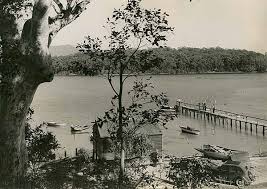 Sara’s panic attacks are also described when she is bullied at school. Throughout the novel we come to understand the source of Sara’s original trauma. A character deftly drawn, Sara craves order and predictability. She’s an avid bookworm – mainly romance novels that Augusto sneers at. She can read up to six in a day, ‘lighting one on the butt of the last until she feels sick and nauseated.’ She reminded me of other children with creative bohemian parents such as Arkie Whiteley. Her romantic reading serves as a kind of mind-opiate but then she discovers the world of literature via a found copy of DH Lawrence’s Women In Love. This book is a revelation to Sara of the power of words and storytelling to resonate in the human soul:
Sara’s panic attacks are also described when she is bullied at school. Throughout the novel we come to understand the source of Sara’s original trauma. A character deftly drawn, Sara craves order and predictability. She’s an avid bookworm – mainly romance novels that Augusto sneers at. She can read up to six in a day, ‘lighting one on the butt of the last until she feels sick and nauseated.’ She reminded me of other children with creative bohemian parents such as Arkie Whiteley. Her romantic reading serves as a kind of mind-opiate but then she discovers the world of literature via a found copy of DH Lawrence’s Women In Love. This book is a revelation to Sara of the power of words and storytelling to resonate in the human soul:  At once she had felt an oddness in the writing. It was quite unlike anything she had ever read before. It was not just that the two sisters in the book did not talk like anyone Sara knew, nor look like anyone with their white dresses and their brightly-hued stockings, grass-green, rose-red, cornflower-blue. It was not just that the words on the page waltzed round and round, pirouetting on points, turning and returning ever again to the same grace notes, building to a mordent melody that thrummed chords in Sara’s own shadow-bound soul, strumming music from keys that had long lain silent and still, coated in dust. In their hearts they were frightened. Enamoured of Women In Love, Sara comes to realise that she is not alone in her terror of the world – all the characters in Lawrence’s world are afraid. She wonders if Lawrence knew the pain she experiences of ‘the horror of other people, the world being too bright and sharp, as if every step brings pain. Like the character of the little mermaid who had her tongue cut out and had to dance on knives.’
At once she had felt an oddness in the writing. It was quite unlike anything she had ever read before. It was not just that the two sisters in the book did not talk like anyone Sara knew, nor look like anyone with their white dresses and their brightly-hued stockings, grass-green, rose-red, cornflower-blue. It was not just that the words on the page waltzed round and round, pirouetting on points, turning and returning ever again to the same grace notes, building to a mordent melody that thrummed chords in Sara’s own shadow-bound soul, strumming music from keys that had long lain silent and still, coated in dust. In their hearts they were frightened. Enamoured of Women In Love, Sara comes to realise that she is not alone in her terror of the world – all the characters in Lawrence’s world are afraid. She wonders if Lawrence knew the pain she experiences of ‘the horror of other people, the world being too bright and sharp, as if every step brings pain. Like the character of the little mermaid who had her tongue cut out and had to dance on knives.’ 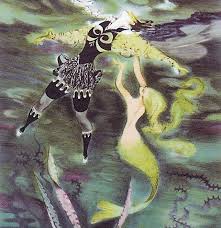
By the book’s climax we come to discover the truth behind Augusto’s fall over the cliff.
The Tarot card drawn at the novel’s end is The World.
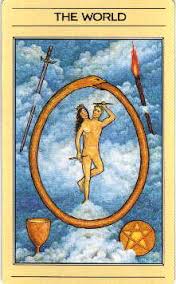 Dancing On Knives is a sad book in many ways, but also a hauntingly sensitive story of dysfunctional families, creativity, the shadow side of art and the longing we endure for self-actualisation and our soul’s true yearning. It is a book that will resonate with all who have experienced the pain of feeling frozen, and not being able to speak your own truth and feeling the outsider in a world that is too sharp and bright. A multi-layered, lyrical, gripping literary mystery from Kate Forsyth. I highly recommend it.
Dancing On Knives is a sad book in many ways, but also a hauntingly sensitive story of dysfunctional families, creativity, the shadow side of art and the longing we endure for self-actualisation and our soul’s true yearning. It is a book that will resonate with all who have experienced the pain of feeling frozen, and not being able to speak your own truth and feeling the outsider in a world that is too sharp and bright. A multi-layered, lyrical, gripping literary mystery from Kate Forsyth. I highly recommend it.
Kate Forsyth’s website can be found HERE
For an interesting interview Kate gave about Dancing on Knives see HERE
This review was part of my Australian Women Writers Challenge for 2014
Thank you for visiting me.
Love and Light,
Josephine